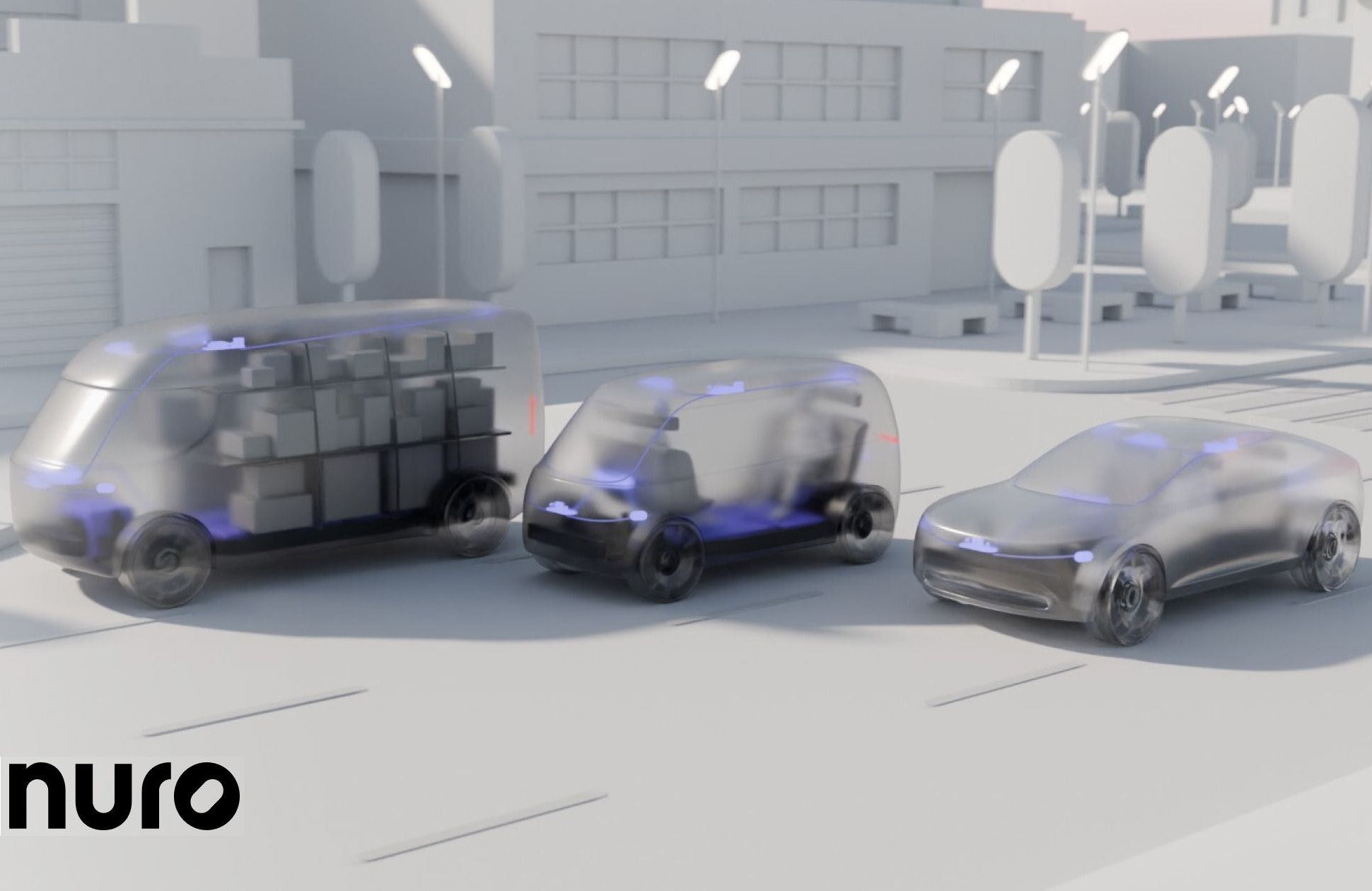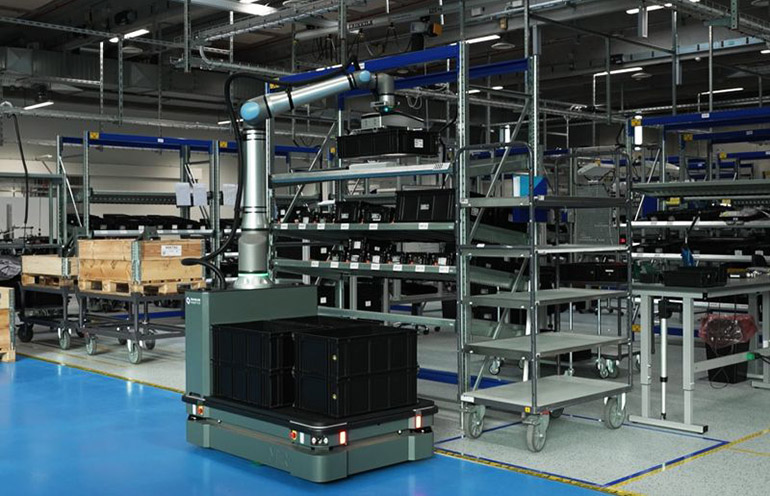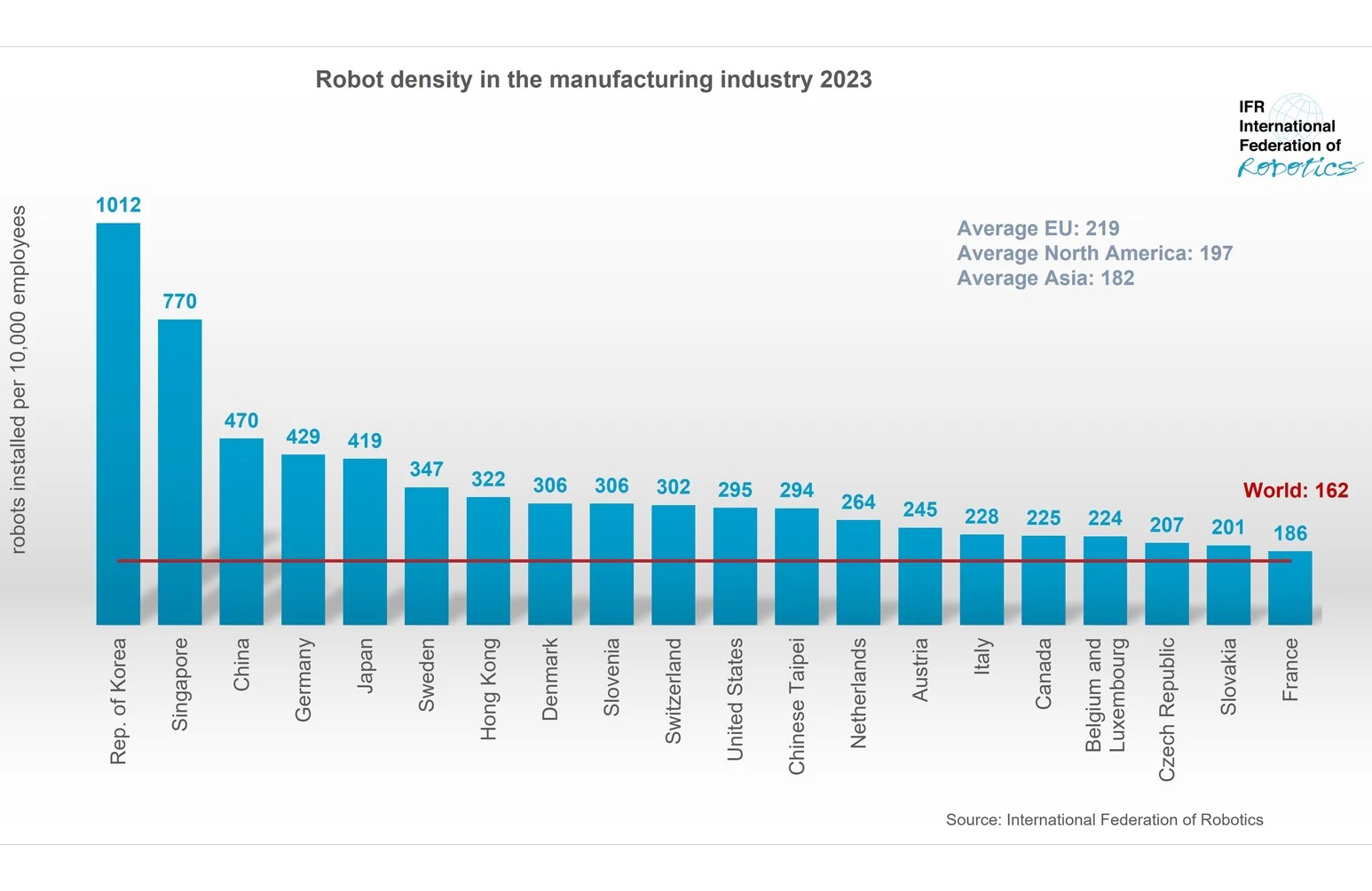Nuro is moving beyond goods delivery and into transporting people with its autonomous technology. | Source: Nuro
Nuro Inc. today announced the expansion of its business model to include licensing its advanced AI-based autonomy platform, the Nuro Driver, to automotive OEMs and mobility providers. The Mountain View, Calif.-based company said it intends for the Nuro Driver to eventually enable self-driving passenger vehicles in addition to goods delivery.
The company said this strategic move uses its years of experience with successful autonomous vehicle (AV) deployments to accelerate the adoption of its technology across the transportation industry. The Nuro Driver combines automotive-grade hardware with artificial intelligence software.
Nuro said its platform will enable up to SAE Level 4 (L4) autonomy for personally owned vehicles and mobility platforms. As part of the new licensing model, the company also announced the Nuro AI Platform, which consists of scalable and performant developer tools to support AI development and validation for the Nuro Driver.
“The mission of Nuro hasn’t changed. Our mission really remains the same. We have been on a mission to better everyday life through robotics for eight years, and that remains true,” Andrew Clare, Nuro’s chief technology officer, told The Robot Report. “The core technology that we’re building also hasn’t changed. We have been building L4 autonomy, and it remains our technical north star.”
Nuro’s road from goods delivery to its latest expansion
Since it was founded in 2016, Nuro has kept its focus on deploying autonomous technology to enable deliveries. Its early AVs were small, pod-like vehicles that only had space on the inside for food. This was the intention, said Clare.
“The reason that we were focused on goods only is that we don’t really care about the comfort of the pizza that drives within our vehicle,” he explained. “We only really care about the safety of outside road users.”
The company gained some traction in 2020 and 2021 with this technology. In 2020, it became the first U.S. autonomous vehicle developer to be given exemptions by the U.S. National Highway Traffic Safety Administaration (NHTSA) for testing on public roads without needing controls for human operators.
Since then, Nuro has worked with Domino’s, Walmart, FedEx, 7-Eleven, Kroger, and Uber for various delivery activities.
It hasn’t been without its challenges, either. In 2022, Nuro laid off 20% of its staff, about 300 employees. Now, Clare said Nuro believes it has the right technology, and the industry has the right ecosystem, to make deploying its technology at scale possible.
“When we started the company, there really weren’t a lot of options out there in terms of sensing and compute technology that could meet the needs of the L4 application,” Clare said. “Fast forward to today. There are lidar cameras and radar going onto consumer vehicles that have increased in capability dramatically since seven or eight years ago.”
Fourth-generation Driver platform enables scale
“We just recently announced what we’re calling the fourth-generation Nuro Driver hardware,” said Clare. “And this looks very different from what you might be used to seeing on our traditional delivery vehicles.”
“It leverages things like solid-state lidar. It leverages things like the NVIDIA Thor compute architecture, and most of the sensors and the compute that we’re going to be using are already going on to mass-produce consumer vehicles,” he added. “So what that provides us with is much better scalability, much improved costs, much improved reliability, and robustness of our sensing compute.”
Nuro’s latest platform is key to this expansion, according to Clare. When the company began developing its fourth-generation Nuro Driver, it took a look at what was available in the industry. It also chose off-the-shelf hardware to make its technology cheaper and easier to produce.
“Going to personally owned vehicles, we see that there are a number of OEMs that we’re already having very active conversations with who are interested in both the Nuro driver itself, our software and hardware, as well as what’s called the Nuro AI platform,” Clare said. “These are developer tools and other things that our OEM can use, as they are developing personally owned vehicles that have higher and higher levels of capability in terms of autonomy.”
Why expand to passenger vehicles now?
“Why are we making this change today? We believe that we have industry-leading L4 autonomy tech and, most interestingly, Nuro remains a commercially independent company,” Clare said. “We are not owned by a big mothership company, and that really makes us a strong potential partner for both mobility companies and for OEMs.”
Nuro asserted that its independence sets it apart from many of its peers in the industry. Companies like Cruise, backed by GM, or Waymo, backed by Google, might not make good partners for OEMs directly competing with these parent companies.
“There’s really strong consumer demand now for autonomous capabilities on consumer vehicles,” Clare said. “We see a lot of OEMs that have recently been announcing autonomous capable vehicle platforms, and that’s something that didn’t exist eight years ago when we founded Nuro. We wanted to take advantage of the fact that more and more OEMs are bringing these capabilities to both consumers and to their vehicle platforms.”
“Of course, our north star continues to be L4, but the OEMs that we’re having good conversations with are also interested in leveraging our tech for either L2 plus or L3-type applications as well,” he continued.
Clare hopes that partnering with a mobility partner for robotaxi operations will mean Nuro can focus on the technology. At the same time, a more experienced company can handle the nuts and bolts of scaling, including handling fleets, financing, ownership, and operations for mobility as a service.
Although Nuro doesn’t currently have plans for a robotaxi deployment, it is casting a wide net. The company is currently going on a tour through 53 U.S. cities to gather important data. And of course, it has delivery operations in Palo Alto and Mountain View, Calif., and in Houston.
All of this means that Nuro is in a better position to scale now than in previous years, the company said.
“You can go to our website and see just how much hiring we’re actively doing right now,” Clare said. “I think we’re also in a really strong financial position. We’ve got multiple years of runway, and that’s due to some of the work that we’ve really been doing to set the company up for success over the past few years.”
OEM partnerships with OEMs are key for scale, says Nuro
“We have been working on this for eight years, trying to both develop the technology, but also expand the capabilities of that technology. I think we’ve always had in the back of our minds that as this technology matures and gets better, we would not just stay as goods delivery forever,” Clare said.
“In addition to that, there also has to be the right circumstances externally,” he added. “You have to have partners who are seeing consumer demand for this technology. You have to have partners who have begun to invest internally in developing L4-capable vehicles, and you have to also have those mobility partners at the table who see a real need and demand for their services. And I think those are a bit newer.”
The company’s partnership with OEMs could also help it to navigate the tricky regulatory environment that surrounds AV technology.
“I think the regulations for true L4 are going to look very similar between a mobility-owned robotaxi and a consumer vehicle because it really is the ability for you to be able to take a nap in the back of the vehicle without any responsibility as the driver for the performance of that vehicle,” said Clare.
“It does get more complicated in L2 and L3, where you have appropriate driver-monitoring systems,” he acknowledged. “You have to make sure that you are really communicating in terms of your expectations between the driver and the vehicle, and that’s where we want to take advantage of the great work that OEMs have been doing on this front for many years.”
Clare said that Nuro must work closely with government agencies and other regulators.
“We’re going to keep partnering with [regulators], and I do see a pathway to L4 on personally owned vehicles, and that’s why we’re really excited about this expansion of our business model,” he said.
While Nuro doesn’t have any specific timelines for this latest expansion, Clare said he thinks Nuro technology could be coming to consumer vehicles sooner than anyone expects.
“I don’t have any timelines to announce today, but we’ve been having very active conversations with both OEMs and mobility providers for the past year,” Clare said. “It’s really exciting when we’re in these conversations to realize the roadmaps of both these mobility providers and OEMs to bring advanced autonomy capabilities to the public.”

 2 months ago
29
2 months ago
29










 English (US) ·
English (US) ·